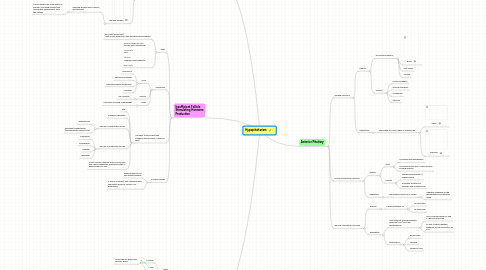
1. Insufficient Follicle Stimulating Hormone Production
1.1. Tests
1.1.1. FSH Test (blood test) -test results depend on age and sexual development
1.1.2. Normal Values for FSH Women past menopause: 14-52 IU/L Men: 1-8 IU/L Children before puberty: 0.5-4 IU/L
1.2. Symptoms
1.2.1. Male
1.2.1.1. Impotence
1.2.1.2. Shriveling of testes
1.2.1.3. Decreased sperm production
1.2.1.4. Infertility
1.2.2. Female
1.2.2.1. No ovulation
1.2.3. Both
1.2.3.1. Starvation or being underweight
1.3. Variables (Factors that may influence the accuracy of the FSH test)
1.3.1. Age
1.3.2. Smoking Cigarettes
1.3.3. The use of hormones such as:
1.3.3.1. Testesterone
1.3.3.2. Estrogen/Progesterone (including birth control pills)
1.3.4. The use of medicines such as:
1.3.4.1. Cimetidine
1.3.4.2. Clomiphene
1.3.4.3. Digitalis
1.3.4.4. Levodopa
1.3.5. A test such as a thyroid scan or bone scan that uses a radioactive substance within a week of the FSH test
1.4. Possible causes
1.4.1. Pituitary gland is not functioning properly
1.4.2. A tumor is present that interferes with the brain's ability to control FSH production
2. Insufficient Growth Hormone Production
2.1. Tests
2.1.1. Blood Tests: Looking for IGF-1 hormone deficiency
2.1.1.1. IGF-1 hormone is responsible for growth in children and enhancing anabolic affects in adults, such as muscle growth
2.1.2. Measure Weight and Height then extrapolate & compare with suggested growth rate
2.2. Symptoms
2.2.1. Adults
2.2.1.1. May not show any visible symptoms, possible characteristics are shortness, and short appendages
2.2.2. Children
2.2.2.1. Dwarfism
2.2.2.1.1. Abnormally/Unusually low stature or small size
2.2.2.2. Stunted Growth
2.2.2.2.1. Reduced growth rate in human development
3. Insufficient Thyroid Stimulating Hormone Production
3.1. Tests
3.1.1. CT scan
3.1.1.1. Check thyroid gland and pituitary gland
3.1.2. MRI
3.1.3. Blood test
3.1.3.1. Look for levels of T3 and T4
3.1.4. X rays
3.2. Symptoms
3.2.1. Confusion
3.2.2. Cold intolerance
3.2.3. Weight gain
3.2.4. Constipation
3.2.5. Dry Skin
3.2.6. Hair Loss
3.2.7. Fatigue
4. Anterior Pituitary
4.1. Growth Hormone
4.1.1. Effects
4.1.1.1. Promotes growth of:
4.1.1.1.1. Bone
4.1.1.1.2. Soft tissue
4.1.1.1.3. Viscera
4.1.1.2. Affects:
4.1.1.2.1. Protein synthesis
4.1.1.2.2. Glucose transport
4.1.1.2.3. Metabolism
4.1.1.2.4. Lipolysis
4.1.2. Regulation
4.1.2.1. Stimulated by GHRH which is affected by:
4.1.2.1.1. Sleep
4.1.2.1.2. Exercise
4.2. Follicle Stimulating Hormone
4.2.1. Effects
4.2.1.1. Male
4.2.1.1.1. Maintains spermatogenesis
4.2.1.1.2. Maintains production of sex-hormone binding globulin
4.2.1.2. Female
4.2.1.2.1. Causes development of ovarian follicle
4.2.1.2.2. Simulates secretion of estrogen and progesterone
4.2.2. Regulation
4.2.2.1. Stimulates production of inhibin
4.2.2.1.1. Negative feedback on the hypothalamus and pituitary gland
4.3. Thyroid Stimulating Hormone
4.3.1. Effects
4.3.1.1. Causes synthesis of:
4.3.1.1.1. T3 hormones
4.3.1.1.2. T4 hormones
4.3.2. Regulation
4.3.2.1. Stimulated by thyroid releasing hormone (TRH) from the hypothalamus
4.3.2.1.1. TRH is released when T3 and T4 hormones are low
4.3.2.1.2. T3 and T4 exert negative feedback on the production of TSH
4.3.2.2. Affected by:
4.3.2.2.1. Blood levels
4.3.2.2.2. Glucose
4.3.2.2.3. Metabolic rate
